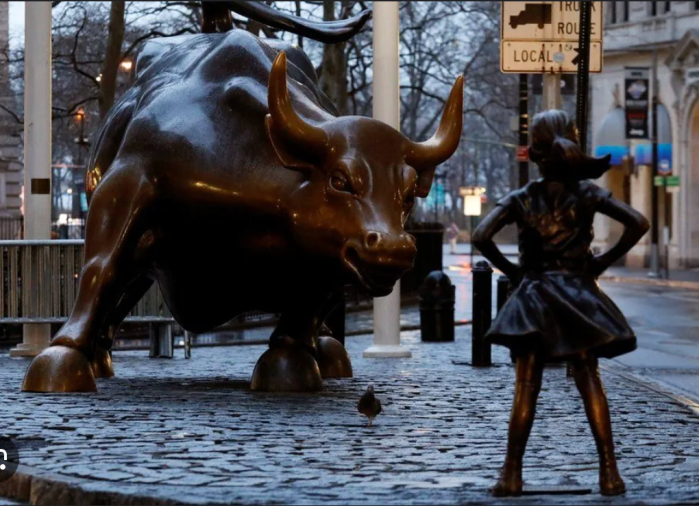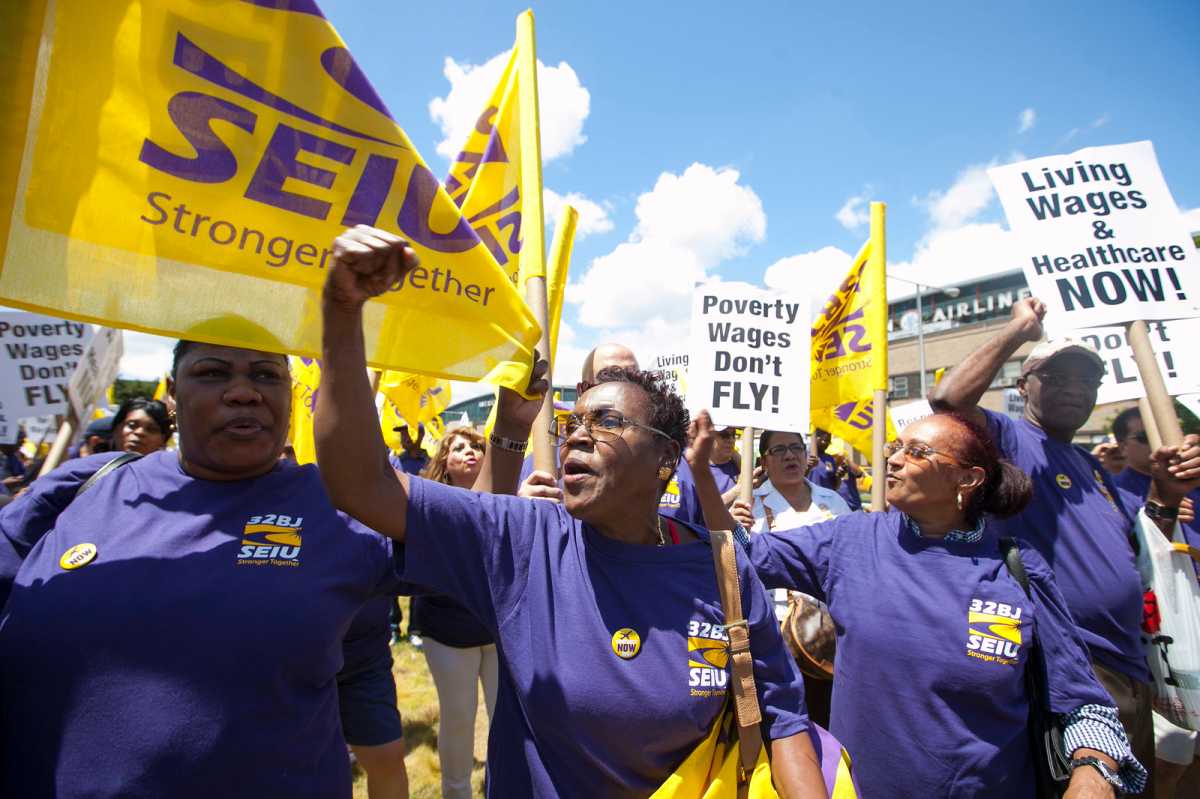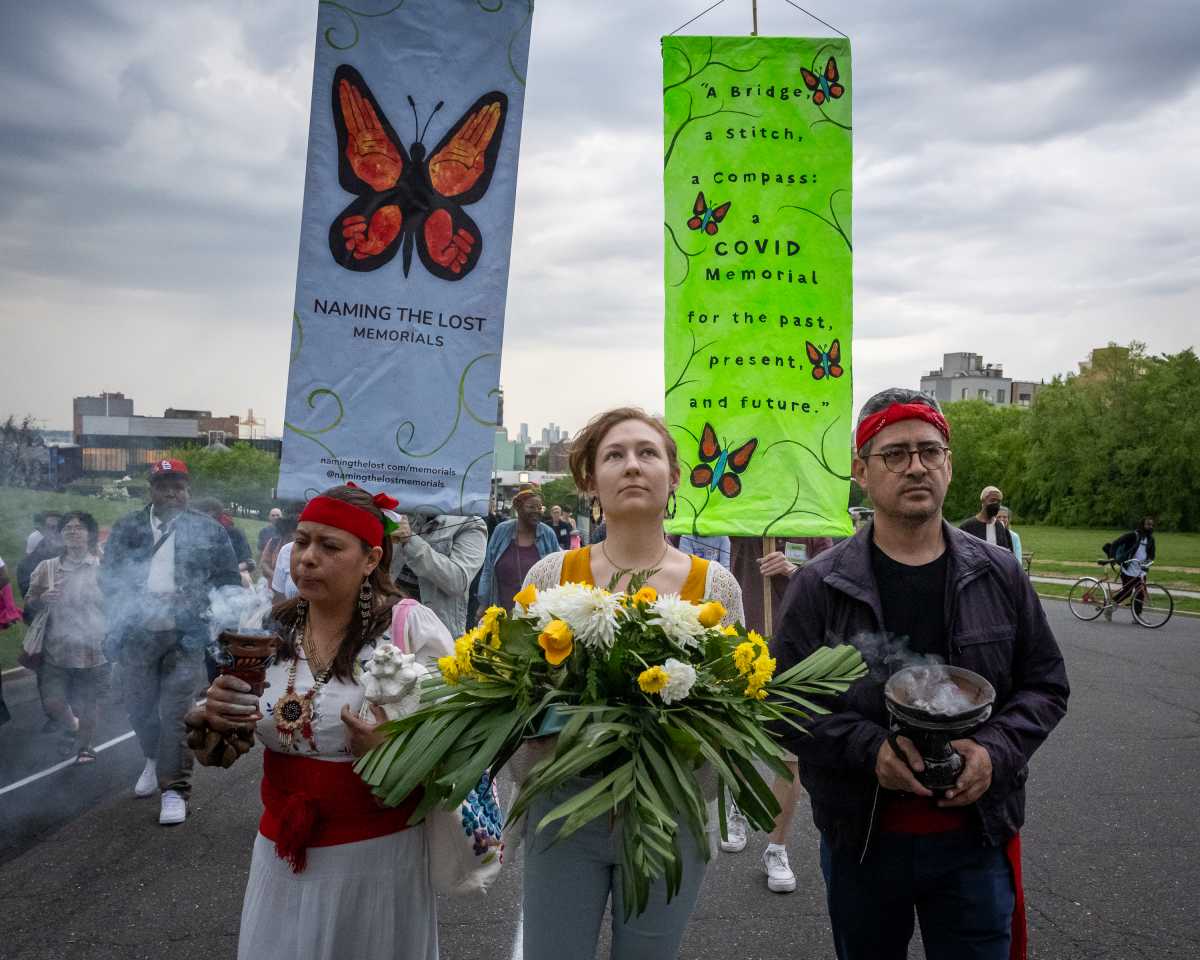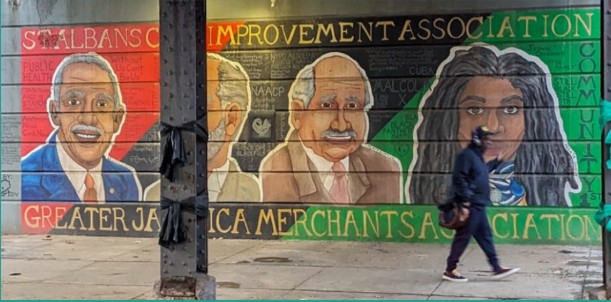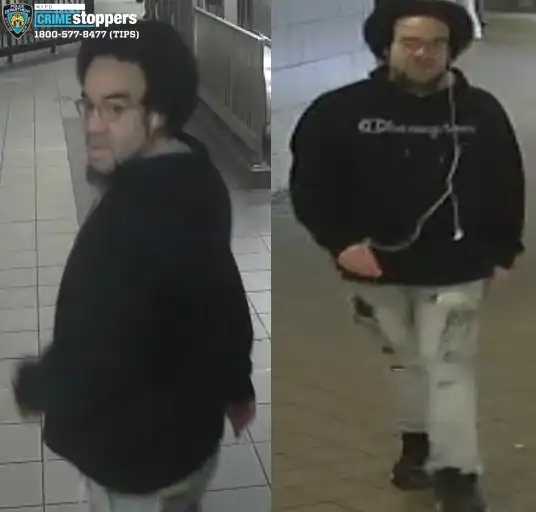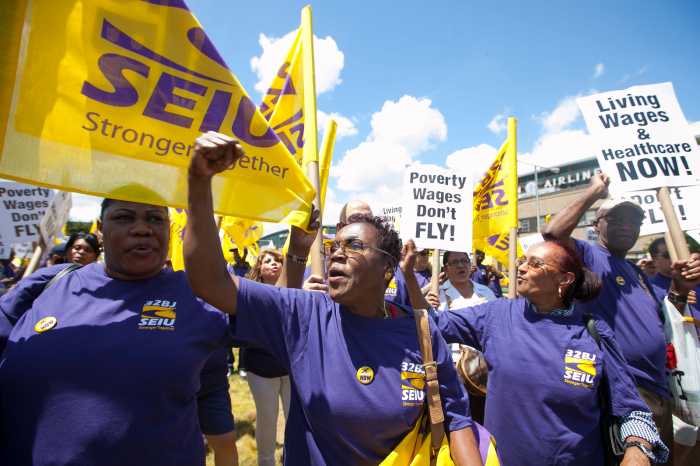By Josh Rogers
Some might call Assembly Speaker Sheldon Silver “Mr. Second Avenue” for his determined efforts to get a subway line built there, but he said last week that there is a transit project even more important — a Downtown rail connection to the Long Island Rail Road.
The rail link has the strong support of the Downtown business community, Mayor Michael Bloomberg and the politician Silver differs with most often, Gov. George Pataki. But many transit advocates argue the link will not attract enough riders to justify the preliminary $6 billion estimate.
In an exclusive interview with Downtown Express editors and reporters last Friday, Silver, 62, said the rail link should be a higher priority than the Second Ave. subway, which he still favors. The link would also provide a 20-minute, one-seat ride from Lower Manhattan to J.F.K. Airport, but the speaker said the most important thing is to improve the commute from Long Island to help Downtown businesses.
“I don’t care if it stops at the airport or not,” Silver, whose district includes the World Trade Center site, said. “What we need is one-seat, Long Island access to Downtown…. I have had the experience of talking to enough businesses down here to know that that’s a real, real factor.”
According to a preliminary estimate, a new rail tunnel in the East River would shorten the Long Island commute by about 15 minutes each way, although it would not be a one-seat ride since passengers would have to change trains in Jamaica, Queens.
Gene Russianoff, staff attorney for the Straphangers Campaign, a non-profit advocacy group, said he was surprised to learn that the speaker ranked the link ahead of the Second Ave. subway. The subway line would draw an estimated 200,000 riders a day once the first part is built, perhaps as soon as 2012.
“The rail link is a stinker,” Russianoff said in a telephone interview. “We think it will move very few people.” He is skeptical of the argument made by business leaders that the Long Island link would spark economic benefits near its stops at the W.T.C., Atlantic Ave. in Brooklyn and Jamaica, and that it will make the W.T.C. a desirable location for international firms. “It’s almost a religious belief on their part that’s not supported by the data.”
Russianoff said one of the problems with the link to Downtown is that it will only stop near the W.T.C., making it less attractive to Long Island commuters who work closer to Wall St. and won’t want to change trains twice or walk 10 minutes or so to get to the office. The link’s environmental impact statement is being prepared by the Lower Manhattan Development Corporation, the Metropolitan Transportation Authority and the Port Authority and is expected to be finished sometime next year.
Silver agrees with Russianoff that the Second Ave. project, which is estimated to cost almost three times more than the link, is important to relieve overcrowding and provide new service along Manhattan’s East Side. Silver said if phasing the project is the only way to get the federal money needed, he is willing to accept for now the current schedule to build the Lower Manhattan portion last, pointing out that a new governor will be controlling the transit authority next year.
“The project will survive this M.T.A. board and like everything else, things change as administrations change. It’s the only project being talked about longer than Jerry Nadler’s freight tunnel,” Silver said in reference to U.S. Rep. Nadler’s plan for a rail freight tunnel. “It’s time to get it going.”
Silver expressed no doubt that Eliot Spitzer, the state’s attorney general, will be the next governor. He said he has spoken often with Spitzer about Lower Manhattan redevelopment plans, but he doesn’t expect the attorney general to comment now, since it is long before he assumes Spitzer will assume office. Silver did repeat many of his criticisms of Gov. Pataki, whom Silver thinks is the person most responsible for the delay in getting construction started at the W.T.C. site.
“Everything has been an embarrassment,” Silver said. “He laid a cornerstone almost two years ago [for the Freedom Tower]. Not one other stone has been put on top of that cornerstone and you have to move that cornerstone [to begin building].”
A year ago, Silver called for speeding up the construction schedule on Church St. to get stores and life back to the site, but the Port, controlled by Pataki and the New Jersey governor, is only now starting to build the bathtub required to prepare for office construction. The sites will not be ready for tower construction for another year.
“The calamity of this whole thing is no matter what you would build down there, that bathtub work had to be done,” he said. “We’re almost five years into it and nobody has done it. There’s 18 months of work that has to get done.”
Silver attended last Thursday’s ceremony at the site marking the beginning of Freedom Tower construction. In the interview the next day he said it represented progress, but the delays mean that it will take a decade to rebuild the site, assuming there are no more delays. On Wednesday, Silver praised W.T.C. developer Larry Silverstein for selecting architects Richard Rogers of the United Kingdom and Fumihiko Maki of Japan to design Towers 3 and 4 respectively. The buildings will be on Church and on Greenwich Sts. and their addresses will be 175 and 150 Greenwich St.
Joanna Rose, Pataki’s spokesperson, said that “the governor’s consistent leadership has driven the momentum Downtown,” pointing to the beginning of construction of the memorial, two transportation hubs, the Freedom Tower and the deal to keep Goldman Sachs in Lower Manhattan, catty-corner to the W.T.C. She said “it’s easy to be a critic when you are not actually doing it.”
Silver said the Goldman deal was a good one, but it ended up costing the public several hundred million dollars extra after the firm temporarily pulled out. Silver said the leader of Goldman Sachs’s real estate department told him last year that the bank dropped out because it seemed like no one was coordinating the W.T.C. site’s security plans. He said the executive told him in a private conversation that “we found out there was no plan, that this Freedom Tower was never going to get built, and he said I don’t think it was malicious but no one talked to anyone.”
Ultimately, the design and security plans for the Freedom Tower were changed and Goldman agreed to build its Battery Park City headquarters after the state and city offered an additional $650 million in tax-free Liberty Bonds.
Another threat to delaying redevelopment are lawsuits filed by 9/11 family groups to stop W.T.C. memorial construction on preservation and religious grounds. Some rabbis argue that the plan to list the names underground is a violation of Jewish law. Silver, an Orthodox Jew, said he was unaware of that restriction although he was careful to say it could just be something he had never heard about. Later in the interview, when he was asked about a plan to set up an eruv — an area making it easier for Ortohdox Jews to observe the Sabbath — near his home on the Lower East Side, he made it clear he is not an authority when it comes to Judaism.
“I have a deal with rabbis for 30 years,” he said. “I don’t pass questions on religious law, and they don’t run in primaries.”
Josh@DowntownExpress.com
WWW Downtown Express




